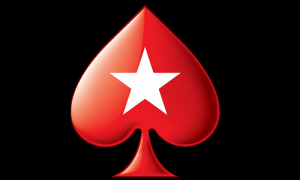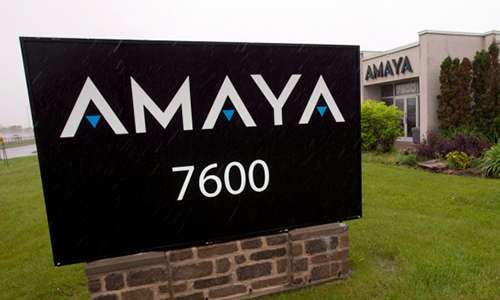Amaya Pushes Back at “Mature” Market Statements as William Hill Merger Talks End
In conjunction with the news that major sportsbetting giant William Hill and PokerStars parent Amaya, Inc. have ended weeks of serious merger discussions, Amaya has pushed back a bit at public sentiments offered by a couple of major William Hill shareholders that online poker was a “mature” market. The implication, made by Parvus Asset Management co-founders Eg Gensmann and Edoardo Mercadante, was that PokerStars and, thus, Amaya, could not be construed as a rapid-growth asset that would be a prime fit to Bill Hill’s future needs.
 This mature-market discordance within William Hill’s executive ranks appears to be one of th primary reasons the whole $5 billion “merger of equals” fell apart. However, are the claims true as stated?
This mature-market discordance within William Hill’s executive ranks appears to be one of th primary reasons the whole $5 billion “merger of equals” fell apart. However, are the claims true as stated?
In a response published on Amaya’s corporate blog that was timed to immediately follow the news that merger talks had ended, the company claims that and other factors to be unfair criticisms. The brief, authored by Amaya’s corporate spokesman, Vice President of Communications Eric Hollreiser, disputes the claims made by the Parvus co-founders, stating, “Following the conclusion of discussions with William Hill regarding a potential all-share merger of equals, the company wishes to take this opportunity to clarify certain inaccuracies contained in an open letter from a William Hill shareholder to William Hill’s board of directors.”
The blog then offered Amaya’s reasoning against such claims of market maturation — in particular as it applies to online poker and PokerStars. Here’s that segment of the corporate blog:
Poker
We acknowledge that our significant market share in the global online poker market (estimated at 71% of player traffic as of Q2 2016) and revenues that are approximately 10 times larger than our closest competitor may make the overall poker market less attractive to our competitors. However, Amaya believes online poker remains very attractive for its business as we maintain significant competitive advantages through the network effect of approximately 2.4 million quarterly active unique players on our platform (as of September 30, 2016).
It is simply not true to say that poker is a mature or declining market based upon certain public data which under-reports the size and growth of the poker market. For instance, PokerScout data, which tracks average ring game players not tournament play, is widely used for measuring poker player traffic, but increasingly only shows a small piece of the pie as it does not capture the continuing customer trend towards tournaments. Tournaments, comprising multi-table tournaments, sit-and-go’s and spin-and-go’s, contributes the majority of Amaya’s online poker revenue, which has been growing on a constant currency basis in the full year 2015 and in the second quarter of 2016.
Measurement of unique poker player traffic for PokerStars has been consistently growing year-over-year for each quarterly period in 2016. Key poker metrics on the PokerStars platform show healthy trends in constant currency terms, even before factoring in our success in marketing casino and sportsbook to those same players.
From a regulatory perspective, Amaya also currently anticipates potential future growth in the global market from positive legislation in the U.S. and elsewhere.
The Amaya brief then looked into claims apparently made by the William Hill naysayers that cross-selling sports-betting services to online poker players (and vice versa), would be a more difficult cross-selling task than one might think. Really? Before examining the poker stuff more closely, those tough cross-sell claims seem thin, and the William Hill hesitancy not well supported. PokerStars has already shown the juice needed to get its new BetStars brand off the ground in several new jurisdictions, and it’s William Hill that has the online-market penetration issues, not Amaya.
As for the Amaya blog, it was then back to poker, with a brief reference to the controversial changes made to PokerStars’ VIP loyalty program over the past couple of years. Again, excerpting from the blog:
Loyalty and VIP Changes
The changes made to the PokerStars loyalty and VIP program have thus far had a net positive impact on our business and the overall poker environment. The changes have actively dis-incentivized some forms of high-volume play that does not positively contribute to the poker environment and does not contribute to our earnings.
Player liability of net depositing customers has been stable throughout 2016.
The blog then concluded with a large-scale invite to the investment world and the public at large to view all of Amaya’s financial filings to judge for themselves as the health of the company, even with the acknowledgment that since 2014, “Amaya has undergone transformational change.”
With due respect to Hollreiser, who is perhaps the best press liaison in all of online gambling (he’s certainly in the top tier), the statements about growth and metrics — one can read the complete blog here — are certainly cherry-picked. That’s not on Hollreiser in any personal sense; it’s his job to make the strongest argument with the facts on hand.
And yet, the viewpoint of most independent analysts, whether within the poker/gambling world or mainstream financial investing, is that yes, there is a significant degree of maturity in online poker, at least as it involves PokerStars. Think of it: With roughly ten times more players than any other site, it means that there are many of online poker players that already have accounts on PokerStars, but don’t on many other sites.
That massive market dominance is one reason why PokerStars is no longerr carried by many prominent online poker affiliates. Well, that… and that PokerStars did to the affiliate world a few years back essentially what it did to many of its high-volume players last year, terminating previously existing agreements, canceling perpetual revenue shares and, thus, eliminating the incentive for many of those affiliates to continue hawking the Stars brand.
Business is business after all. But if PokerStars does succeed in re-entering what it hopes will be a prominent US market, as mentioned in the recent blog, it’ll likely receive less help from the affiliate world in that task. Then again, Stars still enjoys massive, though arguably decreasing, consumer goodwill, so direct-to-consumer marketing may be the best avenue anyway.
Some mainstream financial analysts cite these maturity problems as an issue with Amaya and PokerStars, while others insist the company remains a prime acquisition/merger target. The truth of it all is likely somewhere in the middle.




















COMMENTS